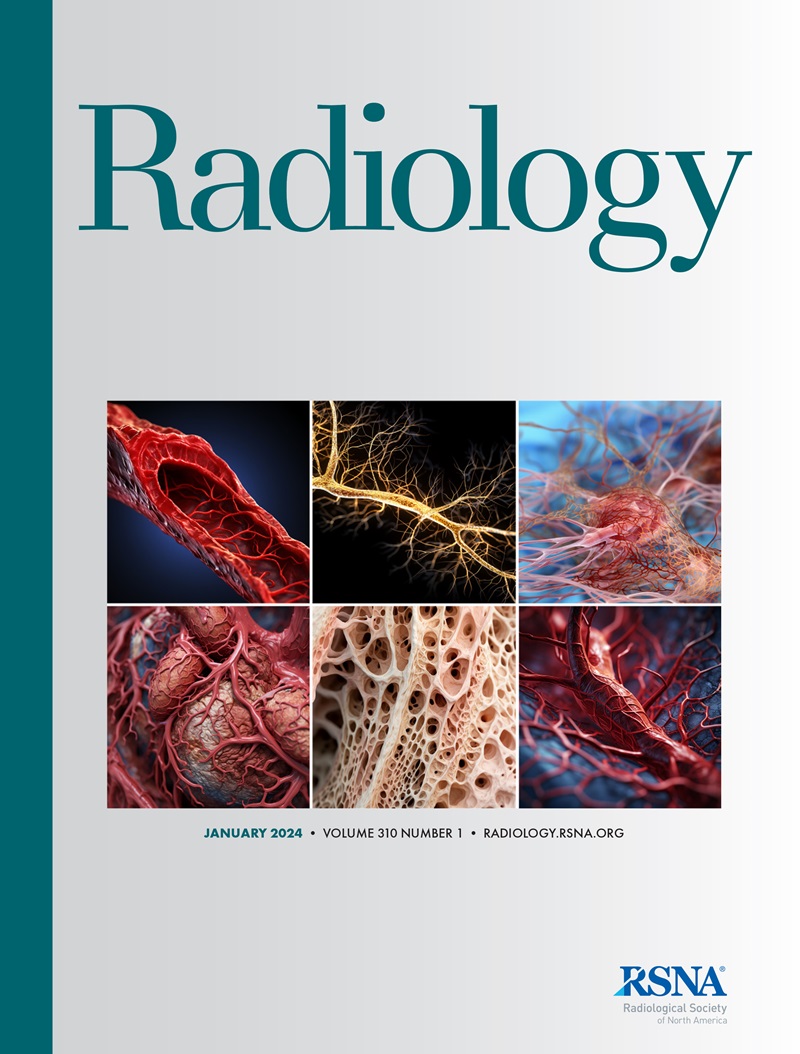Association of Obesity and Skeletal Muscle with Postoperative Survival in Non-Small Cell Lung Cancer.
Ji Hyun Lee, Danbee Kang, Junghee Lee, Yeong Jeong Jeon, Seong Yong Park, Jong Ho Cho, Yong Soo Choi, Jhingook Kim, Young Mog Shim, Sunga Kong, Hong Kwan Kim, Juhee Cho
求助PDF
{"title":"Association of Obesity and Skeletal Muscle with Postoperative Survival in Non-Small Cell Lung Cancer.","authors":"Ji Hyun Lee, Danbee Kang, Junghee Lee, Yeong Jeong Jeon, Seong Yong Park, Jong Ho Cho, Yong Soo Choi, Jhingook Kim, Young Mog Shim, Sunga Kong, Hong Kwan Kim, Juhee Cho","doi":"10.1148/radiol.241507","DOIUrl":null,"url":null,"abstract":"<p><p>Background A comprehensive assessment of skeletal muscle health is crucial to understanding the association between improved clinical outcomes and obesity as defined by body mass index (BMI; calculated as weight in kilograms divided by height in meters squared) in lung cancer, but limited studies have been conducted on this topic. Purpose To investigate the association between BMI-defined obesity and survival in patients with non-small cell lung cancer who underwent curative resection, with a specific focus on the status of skeletal muscle assessed at CT. Materials and Methods This retrospective study investigated Korean patients with non-small cell lung cancer who underwent curative resection between January 2008 and December 2019. Patients were classified into nonobese (BMI <25) or obese (BMI ≥25) groups. Skeletal muscle status was assessed at CT at the level of the third lumbar vertebrae. Low skeletal muscle mass (LSMM) was defined as the sex-specific lowest quartile. Cox regression analysis was used to evaluate the associations of BMI and muscle status with overall survival. Results A total of 7076 patients (mean age, 62.5 years ± 9.7 [SD]; 4081 male) were included, of whom 2512 (35.5%) had a BMI greater than or equal to 25 (obese group). In the setting of absent LSMM and myosteatosis, patients in the obese group had longer overall survival compared with patients in the nonobese group (hazard ratio [HR], 0.77; 95% CI: 0.66, 0.90; <i>P</i> = .001). The associations between obesity and lower mortality were observed only in male patients (HR, 0.72; 95% CI: 0.60, 0.85; <i>P</i> < .001) and patients who had ever smoked (HR, 0.71; 95% CI: 0.60, 0.85; <i>P</i> < .001) who were without LSMM and myosteatosis, with effect differing according to sex and smoking status (<i>P</i> value range, <.001 to .02 for interaction). Conclusion Obesity is associated with improved overall survival in patients with non-small cell lung cancer after curative resection when skeletal muscle mass and radiodensity are preserved. © RSNA, 2025 <i>Supplemental material is available for this article.</i> See also the editorial by Vannier in this issue.</p>","PeriodicalId":20896,"journal":{"name":"Radiology","volume":"314 1","pages":"e241507"},"PeriodicalIF":12.1000,"publicationDate":"2025-01-01","publicationTypes":"Journal Article","fieldsOfStudy":null,"isOpenAccess":false,"openAccessPdf":"","citationCount":"0","resultStr":null,"platform":"Semanticscholar","paperid":null,"PeriodicalName":"Radiology","FirstCategoryId":"3","ListUrlMain":"https://doi.org/10.1148/radiol.241507","RegionNum":1,"RegionCategory":"医学","ArticlePicture":[],"TitleCN":null,"AbstractTextCN":null,"PMCID":null,"EPubDate":"","PubModel":"","JCR":"Q1","JCRName":"RADIOLOGY, NUCLEAR MEDICINE & MEDICAL IMAGING","Score":null,"Total":0}
引用次数: 0
引用
批量引用
Abstract
Background A comprehensive assessment of skeletal muscle health is crucial to understanding the association between improved clinical outcomes and obesity as defined by body mass index (BMI; calculated as weight in kilograms divided by height in meters squared) in lung cancer, but limited studies have been conducted on this topic. Purpose To investigate the association between BMI-defined obesity and survival in patients with non-small cell lung cancer who underwent curative resection, with a specific focus on the status of skeletal muscle assessed at CT. Materials and Methods This retrospective study investigated Korean patients with non-small cell lung cancer who underwent curative resection between January 2008 and December 2019. Patients were classified into nonobese (BMI <25) or obese (BMI ≥25) groups. Skeletal muscle status was assessed at CT at the level of the third lumbar vertebrae. Low skeletal muscle mass (LSMM) was defined as the sex-specific lowest quartile. Cox regression analysis was used to evaluate the associations of BMI and muscle status with overall survival. Results A total of 7076 patients (mean age, 62.5 years ± 9.7 [SD]; 4081 male) were included, of whom 2512 (35.5%) had a BMI greater than or equal to 25 (obese group). In the setting of absent LSMM and myosteatosis, patients in the obese group had longer overall survival compared with patients in the nonobese group (hazard ratio [HR], 0.77; 95% CI: 0.66, 0.90; P = .001). The associations between obesity and lower mortality were observed only in male patients (HR, 0.72; 95% CI: 0.60, 0.85; P < .001) and patients who had ever smoked (HR, 0.71; 95% CI: 0.60, 0.85; P < .001) who were without LSMM and myosteatosis, with effect differing according to sex and smoking status (P value range, <.001 to .02 for interaction). Conclusion Obesity is associated with improved overall survival in patients with non-small cell lung cancer after curative resection when skeletal muscle mass and radiodensity are preserved. © RSNA, 2025 Supplemental material is available for this article. See also the editorial by Vannier in this issue.


